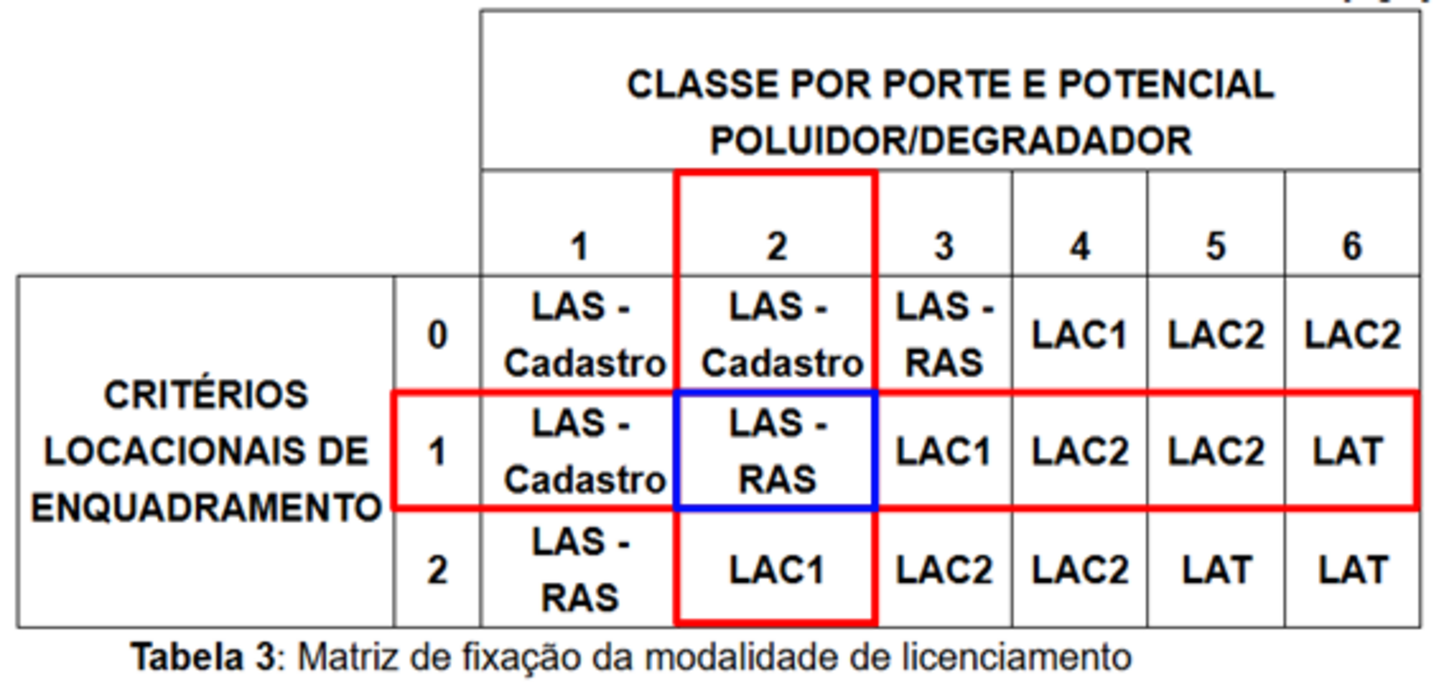BRAZIL. Law no. 6.938, of 31 August 1981. Provides for the National Environmental Policy, its purposes and mechanisms for formulation and application, and makes other provisions. Brasília: Federal Official Gazette. 1981.
BRAZIL. CONAMA Resolution No. 1 of 23 January 1986. Provides for basic criteria and general guidelines for environmental impact assessment. Brasília: Federal Official Gazette. 1986.
FLORES, José Cruz do Carmo. Mine closure: technical, legal and socio-environmental aspects. Ouro Preto: UFOP, 2012. 316p.
MINAS GERAIS. Law No. 21.972, of 21 January 2016. Provides for the State Environment and Water Resources System - SISEMA - and makes other provisions. Belo Horizonte: DOE, 2016
MINAS GERAIS. COPAM Normative Deliberation no. 217, of 06 December 2017. Establishes criteria for classification, according to size and polluting potential, as well as the locational criteria to be used to define the environmental licensing modalities for undertakings and activities that use environmental resources in the state of Minas Gerais, and makes other provisions. Belo Horizonte: DOE, 2017
MINISTRY OF THE ENVIRONMENT. Environmental Licensing Procedures in Brazil / Maria Mônica Guedes de Moraes and Camila Costa de Amorim, authors; Marco Aurélio Belmont and Pablo Ramosandra de Villanueva, Organisers. - Brasília: MMA, 2016. p. 544. Available at: < FINAL-VERSION-E-BOOK-Procedures-of-Environmental-Licensing-WEB.pdf>.
MINISTRY OF THE ENVIRONMENT. National Training Programme for environmental managers: environmental licensing / Ministry of the Environment. - Brasília: MMA, 2009. Available at: < CADERNO DE LICENCIAMENTO AMBIENTAL MINISTERIO DO MEIO AMBIENTE.pdf>.
SÁNCHEZ, Luis Enrique. Avaliação de impacto ambiental: conceitos e métodos. São Paulo: Oficina de textos, 2008.
SOUZA, Barbara Almeida. Sustainability: contexts and challenges / Barbara Almeida Souza, Nadia Lúcia Zuca Simões. - São Paulo: Editora Senac São Paulo, 2022.
WILKEN, A. A. P.; GALAMA, Á. S.. Public participation in the mining activities chamber of the Minas Gerais Environmental Policy Council. Ibero-American Journal of Environmental Sciences, v.12, n.3, p.696-709, 2021. DOI: http://doi.org/10.6008/CBPC2179-6858.2021.003.0055





